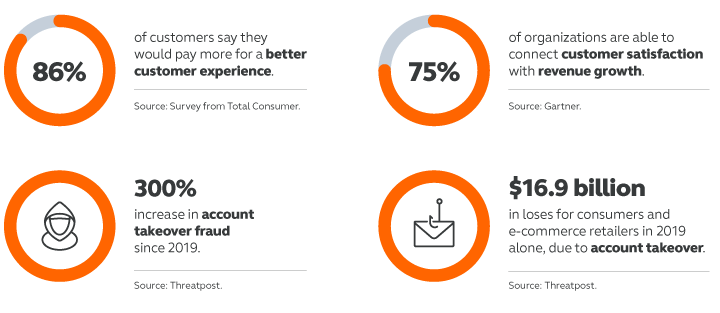How to provide customer-friendly authentication with mobiles
How applying mobile phone numbers in the right way can offer users complete security and an improved customer experience
Add bookmark
In recent decades, we have grown to trust our mobile phones so much that they have become an integral part of both our professional and private lives.
Identification through our mobile phones and mobile phone numbers has become ubiquitous. Practically every day, most of us will use our mobile phone to verify our identity somehow – it might be an email, an SMS, or a push notification. We will stop what we are doing and spend a little bit of time verifying ourselves.
These authentication processes have been with us for some time, and now more than ever, several facts have become apparent:
- The mobile security ecosystem and its exploits are constantly evolving.
- Increasing privacy concerns worldwide, with both customers and governments pushing for higher regulations and increased customer data protection levels, have rapidly made ironclad security the norm for customer experience.
- COVID-19 happened – 68% of enterprise decision-makers say it has greatly sped up their digital transformation. This sudden acceleration has also increased the likelihood of digital fraud.
Are mobile phone numbers still a reliable authentication method?
The mobile phone number is the most practical authentication method we have today.
However, every once in a while, a chink in the armor will appear. Someone will ‘break the code’ socially or technically cheat the system and exploit it for their benefit – but never on a vast scale. Why? Well, because security measures and standards are constantly evolving and being upgraded.
The trick to providing an excellent authentication method is having the most secure solution available while also being practical and frictionless for customers.
However, adding too many authentication steps creates a poor user experience – an interruptive one.
True security is all about layers. There is no single bulletproof solution that will cover all possibilities and prevent identification problems – a castle’s defenses do not rely only on walls.
If done correctly and with the right technology, using mobile phone numbers as an authentication method offers your users complete security without compromising user satisfaction.
The evolution of identity authentication
When looking at account security for online and digital-first services, the two things customers truly care about the most are identity theft protection and keeping their finances safe.
Mobile phones have become such an integral tool in our lives that people have started doing their finances on their mobile phones – whether using regular bank apps or specialized finance apps that let people trade with stocks, cryptocurrency, or even commodities on the world trade markets.
This has opened up opportunities for fraudsters to take advantage of people in new ways and has also created the need to safeguard our identities like never before.
Businesses are being faced with the need to offer the most secure protection available. However, providing it is tricky because if it is not coupled with a frictionless customer experience across the board, it creates problems and turns customers away, whether during onboarding or in-app transactions.
To ensure customer satisfaction and grow their customer base, businesses must provide a safe experience that does not compromise on practicality – they must provide a frictionless experience!

This is where Mobile Identity and Silent Mobile Verification come in.
What is Mobile Identity?
Infobip’s Mobile Identity is a set of authentication solutions that was created to protect against common security hazards such as SMS interception, and similar methods fraudsters use.
It delivers an ironclad security experience while also not interrupting your customers during various steps such as:
- User onboarding
- Login
- Password reset
- Transaction verification
- Continuous phone number check
How Silent Mobile Verification uses mobile numbers to improve customer experience?
As reported by Business Insider, nearly two-thirds of European consumers abandoned digital banking applications in 2020. The lockdowns unveiled a substantial number of customer complaints about non-seamless and interruptive customer experience.
It’s not a question of whether you’re going to have to introduce more security – security regulations are only going to ramp up moving forward. It is a question of how seamless and frictionless of an experience you will provide to your customers.
As already mentioned, an exceptional security does not compromise on security or customer experience – It delivers both!
Silent Mobile Verification is a part of Mobile Identity that works by matching the customer’s phone number (MSISDN) with the Mobile Network Operator and checking for any potential fraud with the mobile number in question.
Silent Mobile Verification leverages the mobile phone number to provide exceptional authentication entirely silently, in the background.

Best of both worlds
What makes Silent Mobile Verification ultimately stand out is that it does not interrupt the users while they are using your app or service – it is a perfect blend of security and practicality.
For more information on how you can Infobip can help you drive better customer experiences, access the Infobip content hub



